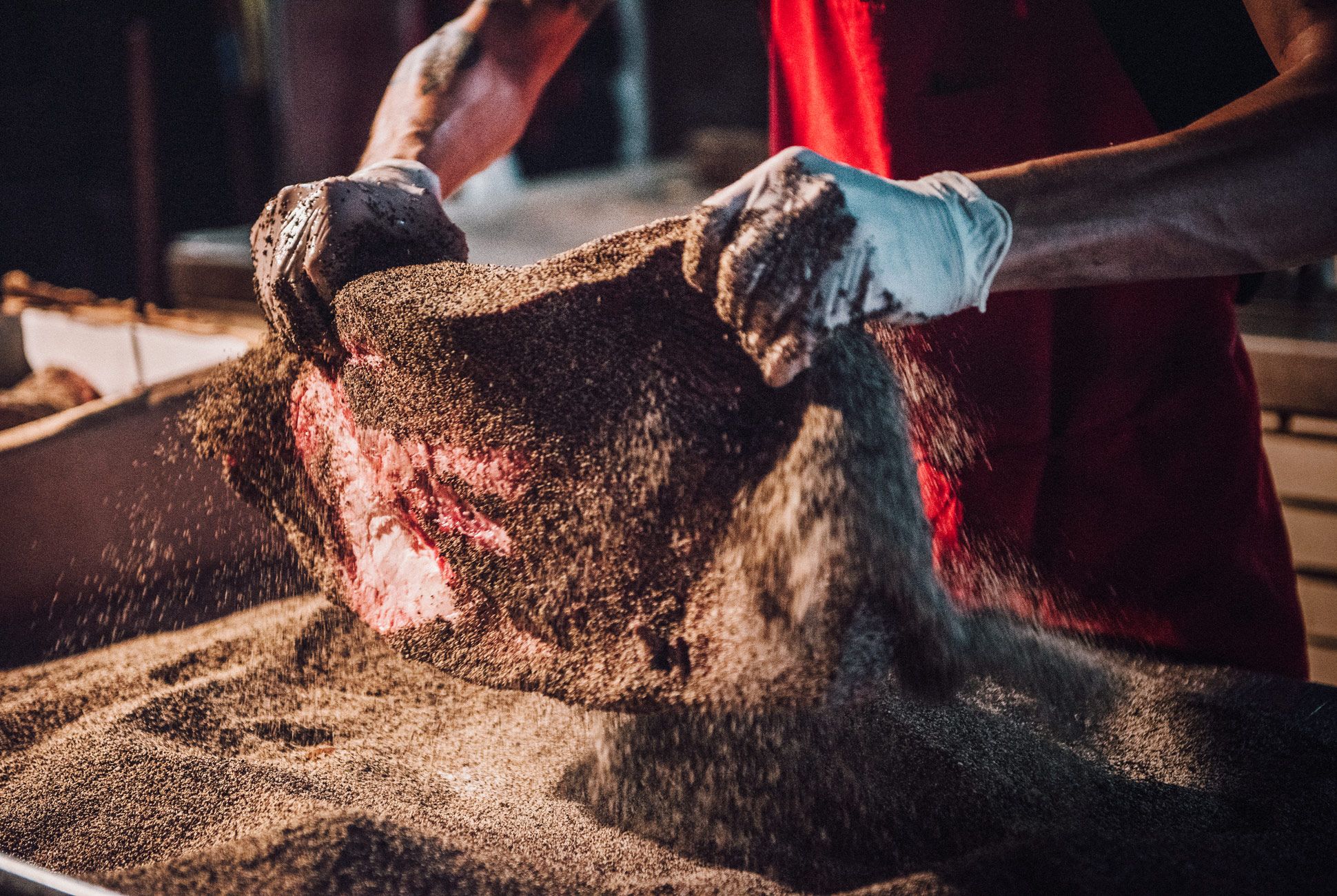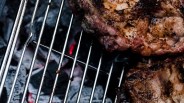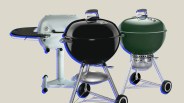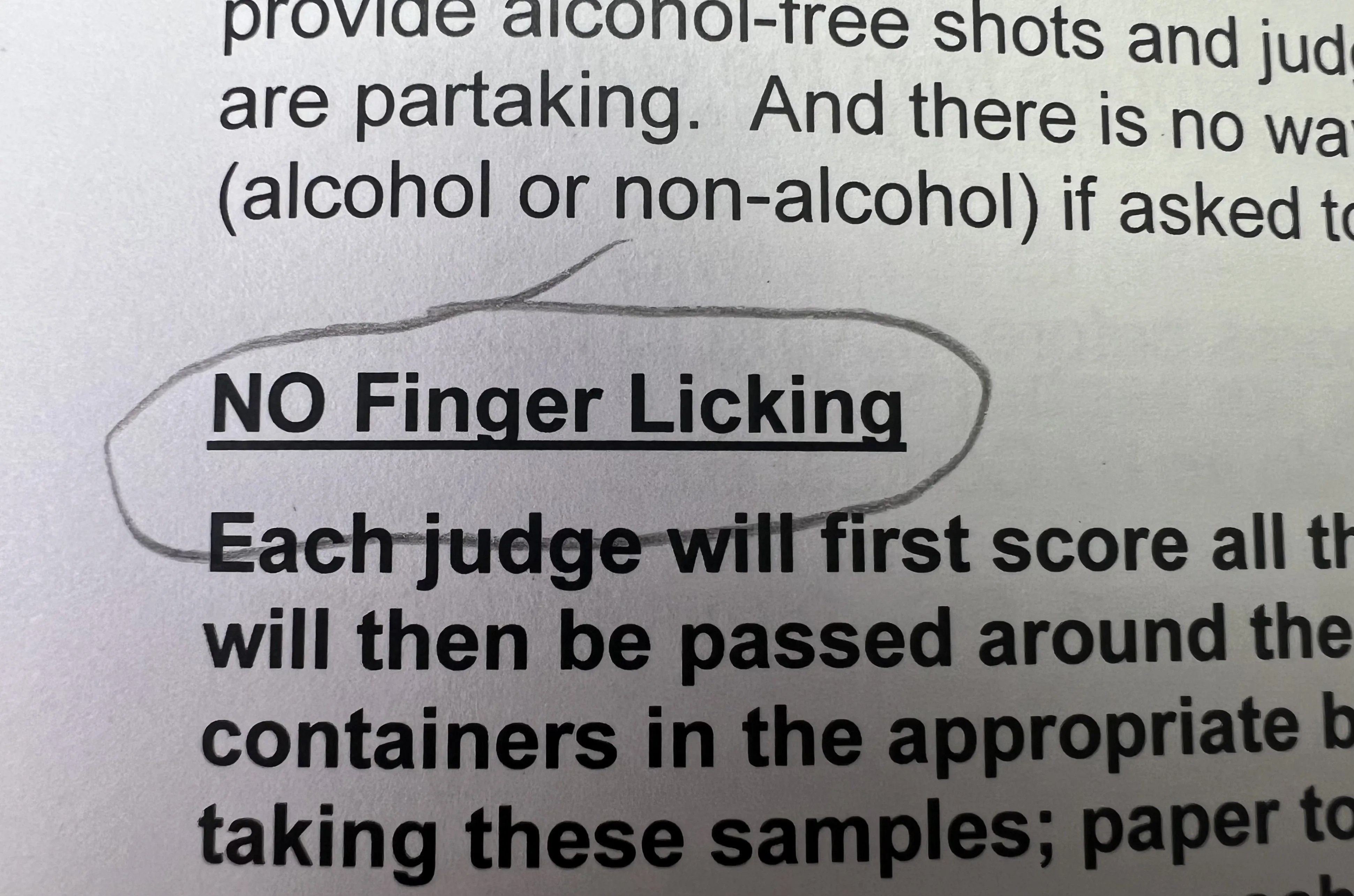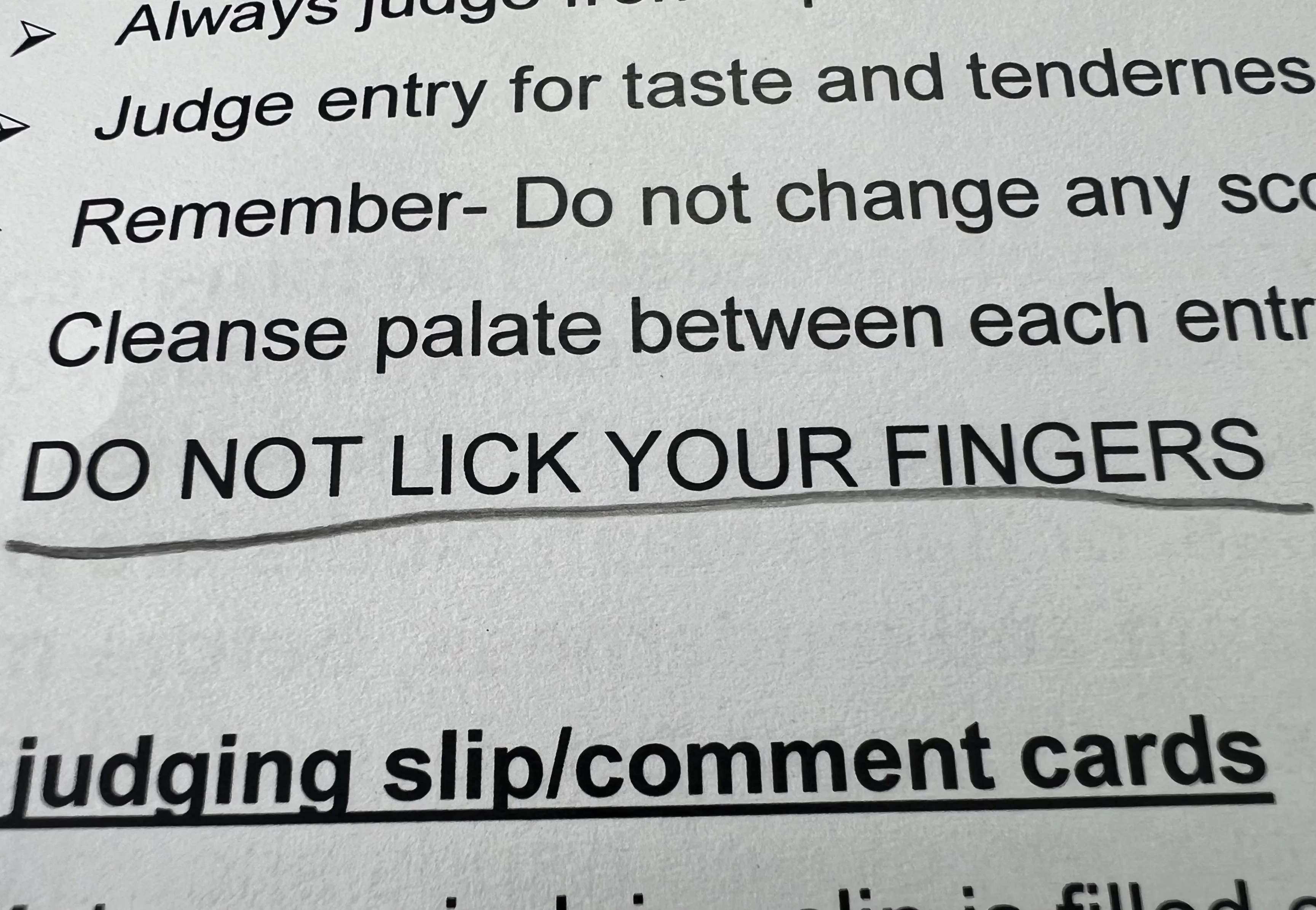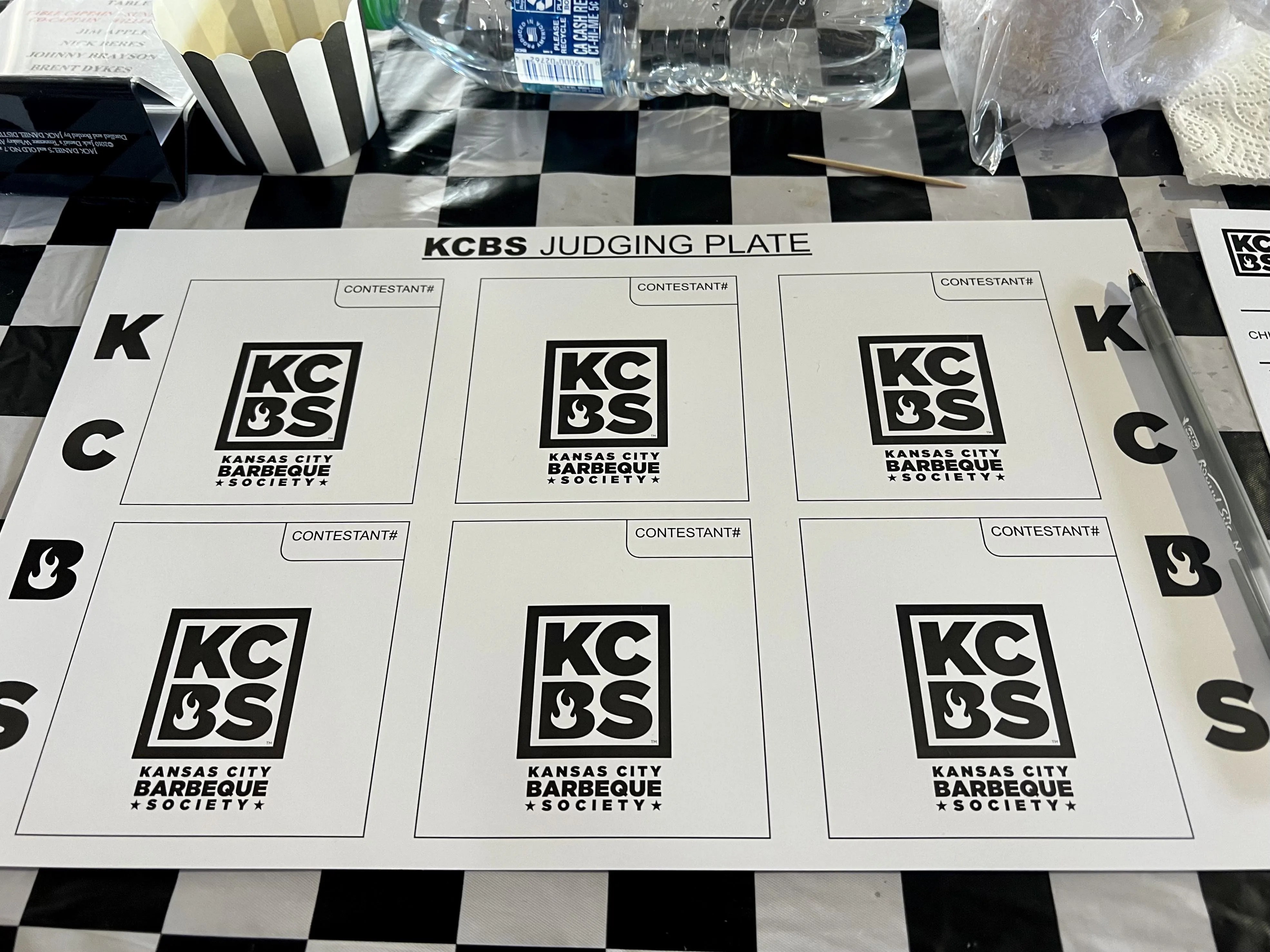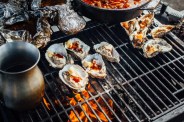You may think you know what constitutes good barbecue, but has a BBQ governing body officially sanctioned you to judge its merits based on appearance, taste and tenderness? If the answer is “no,” then you are not fit to dine at my checkered tablecloth-covered table. If your answer is “yes,” then welcome, fellow Kansas City Barbecue Society member (commence secret handshake).
Yes, the rumors are true. I am now an officially certified barbecue judge, and my life is forever changed. Well, it’s at least changed for a year until my certification runs out. To learn more about how I gained this delicious feather in my cap, read on.
Hitting the Road with Jack
Early in the fall of 2023, Jack Daniel’s invited me to be one of its media judges at the next installment of “The Jack,” the whiskey brand’s massive international BBQ competition that ranks among the most prestigious in the world. Naturally, I jumped at the opportunity to head to Tennessee and fill my belly with delicious slow-cooked meats — but there was a catch. To act as a judge in the competition, I would first have to become certified as a BBQ judge. Not really knowing what that entailed, I agreed.
The day after flying into Nashville, I was shuttled out to Jack Daniel’s home of Lynchburg, a tiny, unfortunately named town of around 6,500 whose population temporarily increases about sixfold the weekend of “The Jack.” Once in Lynchburg, I was taken directly to a small American Legion hall, which would function as my base of operations for the next several hours. The hall was set up with several rows of folding tables and chairs all facing the front of the room, where an overhead projector teased an upcoming PowerPoint presentation on a pull-down screen.
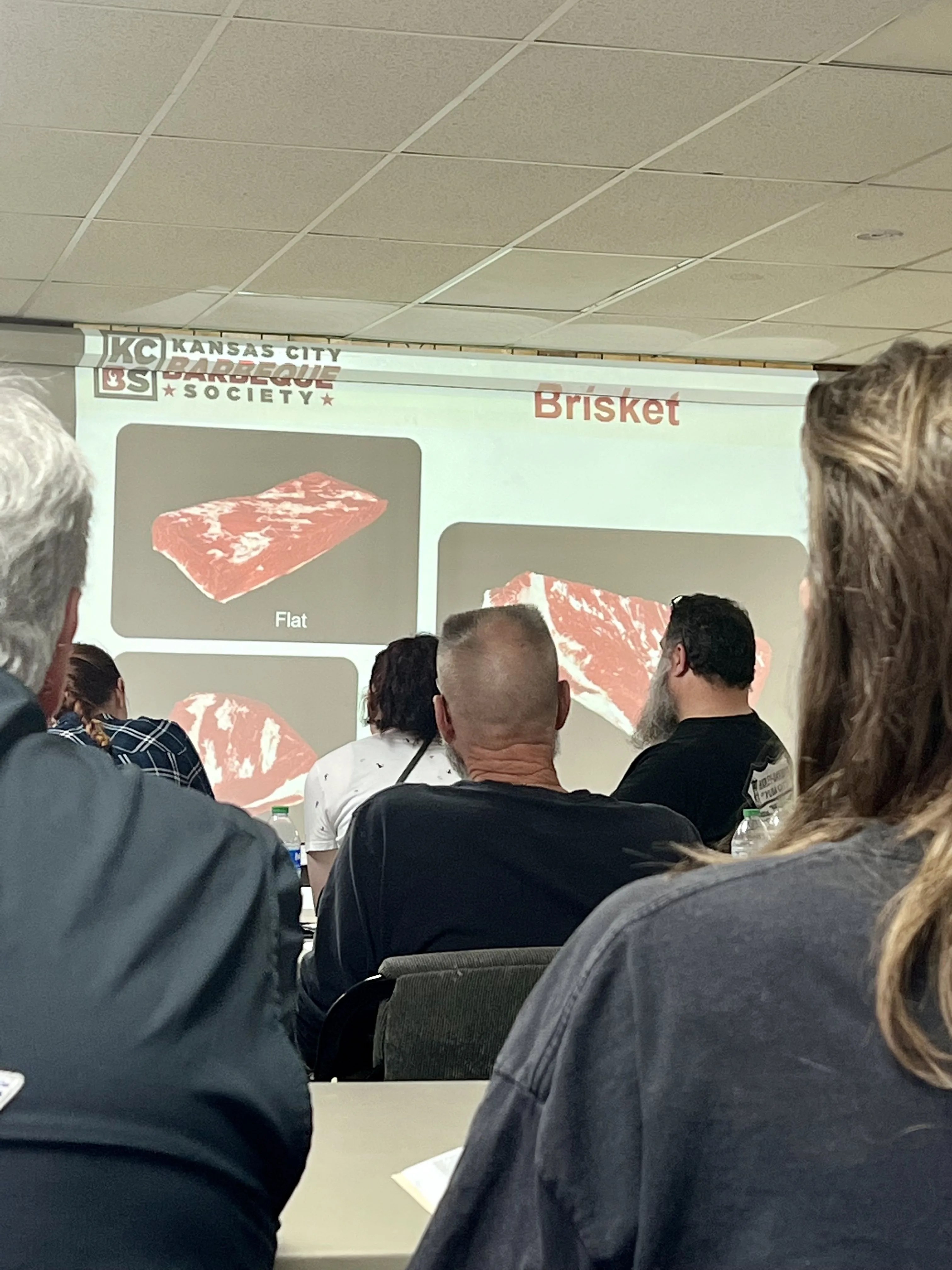
After getting signed in and informing more than one skeptical official that I hadn’t personally paid any fee because I was there on behalf of Jack Daniel’s and they were footing the bill (I’m assuming there must be rampant fraud on the BBQ judge certification class circuit), I was handed a thick course booklet and took my seat for what ended up being a four-hour class on the ins and outs of judging BBQ according to the hallowed laws of the Kansas City Barbecue Society (KCBS).
As I came to understand, the world of BBQ judging was not unlike the Wild West before the KCBS came along to bring order to the chaos in 1985. Founded by husband and wife duo of Carolyn and Gary Wells and their friend Rick Welch, barbecue fans all, the society set out to not only develop rules to govern BBQ judging but also to set up and promote BBQ contests around the country and, eventually, the world. Today, the KCBS counts over 16,000 members among its ranks and sanctions over 300 contests globally.
Finger Food & Prohibited Garnishes
Before class started, I was told to flip through my course booklet and familiarize myself with the basics. Some of it made sense. For instance, four official BBQ categories are judged in the main KCBS-sanctioned contests: chicken, pork, pork ribs and beef brisket. Judges are to assess this quartet of carne on three criteria: taste, tenderness and appearance. So far, pretty normal. But the booklet also contained a number of idiosyncratic rules, as well.
For one, there are no utensils allowed: You must eat with your hands. Secondly, there is a hard and fast rule, repeated throughout the booklet and in the class, against finger-licking. Do you know how hard it is to not lick your fingers while eating ribs, particularly when forced to eat with your hands? It’s basically impossible.
Finger lickin’: bad
2 photos
The absolute strangest rules concerned the garnishes. Garnishes are divided into two camps: legal and prohibited garnishes. Legal garnishes include green leaf lettuce, green curly kale, cilantro, parsley… and that’s it. Prohibited garnishes, meanwhile, are basically all other leafy green vegetables. That includes all varieties of kale that aren’t both green and curly, along with endive, spinach, lettuce cores, etc. But wait, there’s more.
Even if a cook uses 100 percent legal garnishes in their presentation, it will still run afoul of the rules if said garnishes were used to build a little fence around the meat. Garnishes can only be used as a bed for the meat to sit on; they can’t be overly decorative or functional.
Garnishes are optional, and we were told to judge only the appearance of the meat.
And here’s the real kicker. Although appearance is one of the three criteria a judge is to consider, along with taste and tenderness, a judge isn’t actually supposed to judge the appearance of the garnish at all. Garnishes are optional, and we were told to judge only the appearance of the meat (i.e., make sure it’s attractive and there are enough pieces for the entire table of judges) as if the garnish weren’t there at all. The only aspect of the garnish to which a judge is to pay attention is whether or not it came from a prohibited plant.
I estimate that at least a quarter of the class was devoted to the rules governing garnishes — it was by far my biggest takeaway from the class. But why are the garnish laws so specific and strange? As far as I could tell, no one knows. Our instructor hinted that the Wells may have been a bit lost in the sauce (and I don’t mean BBQ sauce) while putting the rules together four decades ago, but I can neither confirm nor deny the accuracy of that hypothesis.
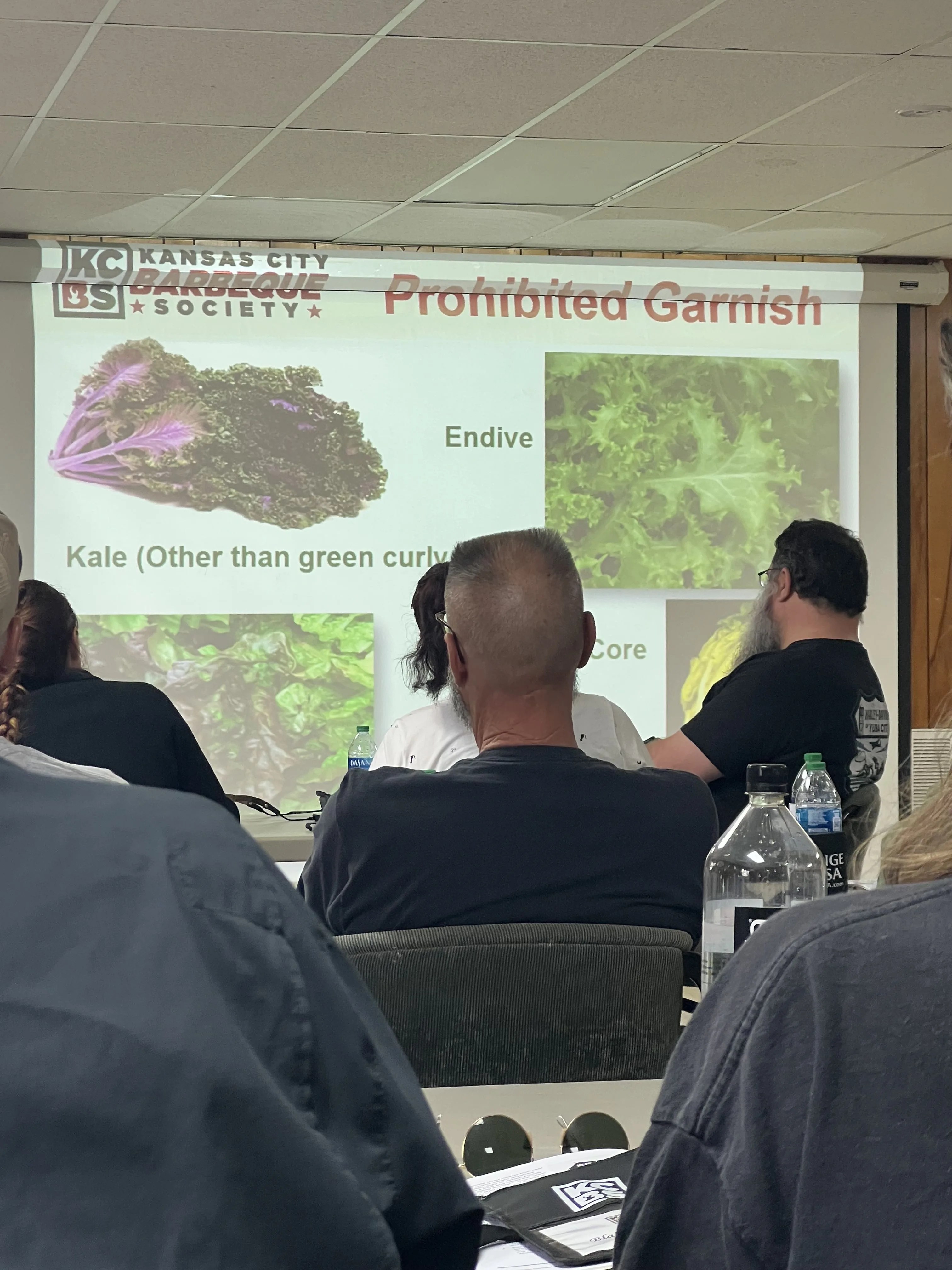
As for the other two criteria, they were more sensical and straightforward. When judging for taste, you’re not supposed to base your scoring on your own personal preferences. Instead, you should look for a balance between the five flavors of sweet, sour, bitter, salty and umami.
Regarding tenderness, fall-off-the-bone ribs are a no-no — that means they’re overcooked. The meat should be moist without being mushy and should have an appropriate amount of give while being neither too firm nor too soft, and different meats can be tested for proper doneness in different ways. (Brisket, for example, should be able to be manipulated like an accordion, returning to its original shape when horizontally stretched rather than breaking or being too rigid to stretch.)
Testing, Testing
During the four-hour class — which did, thankfully, include a couple of breaks — we were led to believe there would be a test at the end where we could potentially fail to qualify as a judge. This, thankfully, turned out to be a bluff. There was no real test, and as far as I could tell, no one in the class (there were a few dozen of us) failed to become a judge at the end of it. What we did do at the end of class was apply what we learned (again, largely concerning garnishes) to judging actual BBQ that had been prepared for us.
In my class simulation, just as in an actual KCBS competition, there are six judges to a table who are lorded over by a “Table Captain” — a veteran judge not taking part in the judging – whose responsibility it is to distribute the meat for judging, collect the scores and answer any questions that arise. Judges are not permitted to speak or use their phones while scoring is taking place, and photographing the food is a big no-no. Judges are encouraged to share their thoughts with one another between rounds, however.
